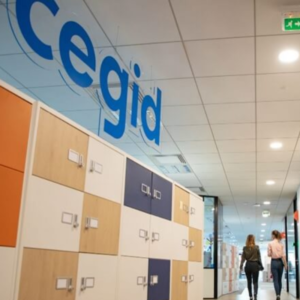By Pilar Albo
Creativity is intelligence having fun – Albert Einstein
If you took a blank page, what would you write on it? Probably the answer would depend on how old you were when that question was raised. If we were asked in our childhood and offered a sheet of paper and a pencil, we’d start doodling, letting our imagination fly and depicting everything we felt or imagined. However, if this same process is done when we are adults, we would be appraising our drawing so much more, or even leave that sheet blank. Why is this so?
Creativity is an intrinsic ability within us. When we are little, we use our imagination to learn, to generate new ideas and to invent solutions for the different situations we encounter. We are not afraid to ask, to put forward our proposals, to experiment. However, this ability to generate new ideas diminishes with age, something that is partly due to our educational system. When we start school, the rules and the assessment systems, among other factors, categorize and inhibit us, forcing us to adapt to established patterns. “The human being needs creativity for problem-solving; we say that entrepreneurship is the future, but in the current educational system we negate it because when a child answers differently to what is expected, the teachers correct it, and that’s how they wind up curtailing the children’s ability to be creative and innovative,” pointed out Petra M. Pérez, the professor of Theory of Education at the University of Valencia and a member of the Institute of Creativity and Educational Innovation.
So, we must be aware of the importance of creativity and know how to promote it in the workplace. Creative people are those who see problems that others haven’t seen, perceiving these as interesting challenges to tackle. According to Rita Gilbert, the author of “Living with Art”, there are 8 common characteristics of creative people:
- Analytical ability: allows us to identify problems, recognize important information, and coordinate data to make the right decisions.
- Fluency: ability for prompting the creation of new ideas spontaneously and quickly.
- Sensitivity: the faculty by which we perceive external stimuli through our senses. These tell us about the things surrounding us and provide us with diverse information.
- Flexibility: ability to switch from one idea to another, giving a variety of answers and modifying or shaping our ideas as well as overcoming our own limits.
- Originality: ability that allows us to contribute new ideas, that are distinct, unique, and break with the established lines of thinking.
- Optimism: ability to perceive bad situations as opportunities and challenges for growth and ultimately learn from mistakes.
- Productivity: ability to generate new ideas and put them into practice efficiently.
- Organizational ability: that allows us to position the factors in the right order to reach our final goal.
So, if teachers at school play the role of instructing us to improve our results, to enhance our imagination, and to motivate us to discover our proclivities and turn them into passions, then in the professional field it is the company’s responsibility to bring forth the proclivities and provide their employees with the means needed to boost their creativity and thus improve their productivity.
Creativity in companies
Having professionals with a high potential for creativity within our companies brings added value that confers the company a great capacity for innovation, for generating new ideas that strengthen the brand’s DNA, and helping to increase profits and efficiency. However, finding these qualities in our employees is not easy, as we have pointed out, our society tends to mimic creativity. Ken Robinson—a British educator, writer and lecturer—points out in his work that one of the reasons why people do not take risks with their ideas is the fear of failure: “Kids will take a chance. If they don’t know, they’ll have a go. They’re not frightened of being wrong. I don’t mean to say that being wrong is the same thing as being creative. What we do know is, if you’re not prepared to be wrong, you’ll never come up with anything original. […] And by the time they get to be adults, most kids have lost that capacity. They have become frightened of being wrong. And we run our companies like this. We stigmatize mistakes. […] And the result is that we are educating people out of their creative capacities.” In the workplace, creativity is a key aspect since it improves business productivity and efficiency and brings great competitive edge to brands for positioning in the market.
What should companies do to boost creativity in their employees?
In the first place, we must bear in mind that for our professionals to be imaginative, they must have a high level of self-esteem. So, it is important to motivate them, to generate positive stimuli that make them comfortable in their environment, so they can share their more creative ideas and solutions. Even though our method of working is mechanical, full of rules guiding thoughts and disallowing ideas to be developed, we must back formulas that boost creativity. Some of the guidelines that may promote creative development are the following:
- Establish a creative work environment: predisposed to the development of imagination with open spaces, in which teams can work together putting forward their ideas.
- Enhance brainstorming: all ideas are welcome. Set up periodic meetings that facilitate brainstorming around a project, a topic, or a specific problem. Let your employees be imaginative, propose new solutions, and engage in discussions among themselves.
- Spur confidence: in your employees so that they feel comfortable and able to contribute ideas.
- Offer rewards: generate interest in your employees so they give free rein to their ideas and motivate them to participate with their original proposals in internal competitions in which they can win a prize.
- Break the routine: create new goals that encourage them to participate with new ideas for different functions.
While it is true that inspiration always comes without warning, bringing about certain situations in our company makes creative thinking more present in our employees. Apart from the guidelines previously indicated, there is a state that we must always foster in employees: happiness. Professionals, who feel comfortable and proud of the work they do and whose work experience is very positive, are more inclined to develop their best facets in our company. That’s why we must spur this strong link between company and employee through the right processes and tools that captivate them. People always seek happiness and it is right in that state of mind when we deliver our best results.






